Great Design Plant: Arctostaphylos Glauca Nourishes and Delights
As with many manzanitas, big berry (Arctostaphylos glauca) has an architectural structure with dark red seasonally peeling bark and sinuous branches that add a sculptural sensibility to a rugged or natural garden.
Its extra-large namesake berries are up to ½-inch across and are the largest of all manzanita berries. From summer to fall, the berries decorate the foliage and are food for mammals and birds. Some people even use the berries to make yummy manzanita cider.
The evergreen leaves vary from white-gray to blue-gray and look fresh year-round. Big berry manzanita has urn-shaped pink to white flowers that put on a striking show from winter to spring and feed butterflies, pollinators and migrant hummingbirds, when most gardens are sleeping.
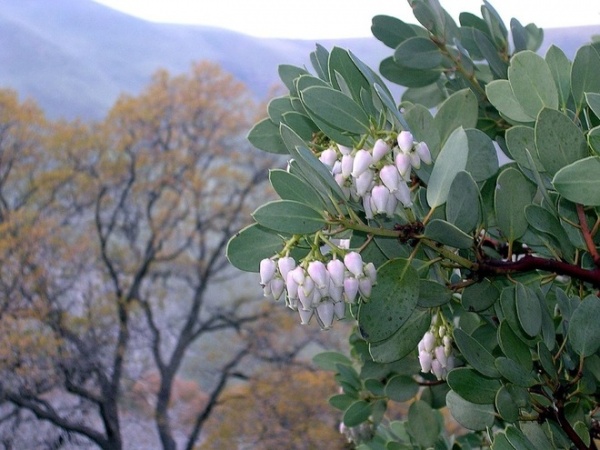
Botanical name: Arctostaphylos glauca
Common name: Big berry manzanita
Origin: Northeast San Francisco Bay, Inner South Coast Range, Transverse Range, Peninsular Range, Southwest desert mountains
Natural habitat: Rocky slopes, chaparral, woodland, elevations below 4,500 feet
Where it will grow: Hardy to 10 degrees Fahrenheit (USDA zones 7 to 10; find your zone)
Shown: Winter flowers of big berry manzanita
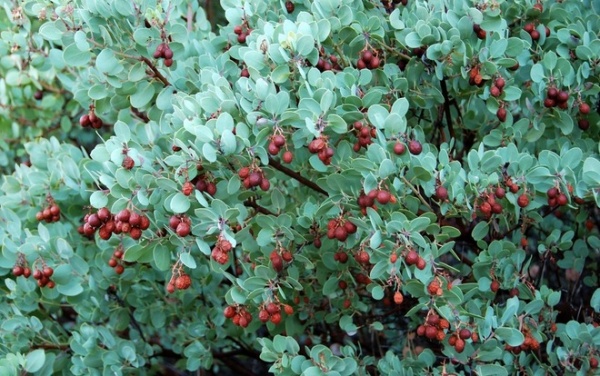
Water requirement: Drought tolerant to occasional water
Light requirement: Full sun
Soil requirement: Adaptable but does best in well-drained soils
Mature size: Reliably 10 feet tall and wide; can grow to 12 feet tall and wide; smaller in a container
Shown: Berries of big berry manzanita
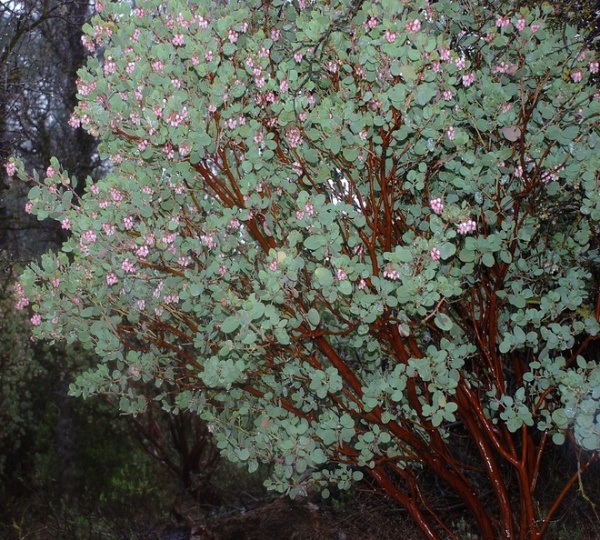
Benefits and tolerances: Slope stabilizer; moderately deer resistant; makes a pleasing container plant
Seasonal interest: Urn-shaped flowers in late winter to early spring; smooth, dark red bark that peels seasonally; from summer to fall the biggest manzanita berries grow up to a half inch across
When to plant: Fall to spring is ideal
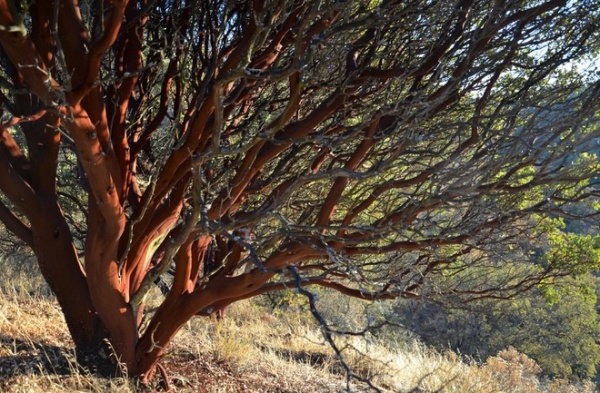
Distinguishing traits. This evergreen shrub or small tree grows up to 12 feet tall and has sinuous branches, an architectural structure and sculptural branches. It sports large berries up to ½ inch across from summer to fall. The urn-shaped pink to white flowers bloom from winter to spring.
Wildlife value. Pollinators, large butterflies and hummingbirds enjoy the flower nectar from late winter to early spring, when little else is blooming. Birds and mammals eat the seed-berries. Big berry manzanita provides great cover for wildlife.
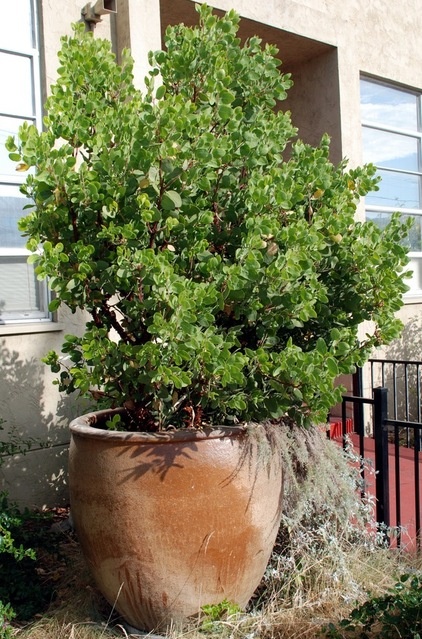
How to use it. Due to its large mature size, big berry manzanita is best used in a garden with a natural theme as a single specimen in the background or as a focal point. In a container big berry manzanita will be smaller yet will still make a great statement.
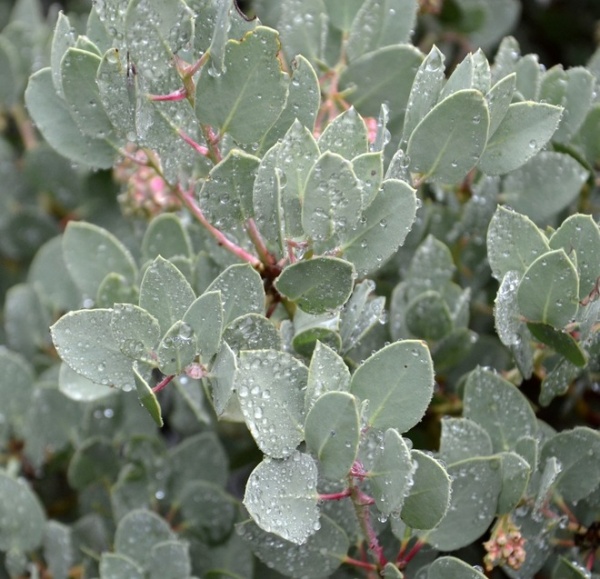
Planting notes. Select a location where big berry manzanita will get excellent drainage, such as a hillside or rocky location. Once established it will want little or no irrigation in the summer. It is unreliable in rich or heavy soils.
Big berry manzanita will thrive in dry summer heat and will be happiest in interior and Southern California gardens. Big berry manzanita does best in gardens away from the coast and won’t tolerate desert or high-mountain conditions.
Prune manzanitas only in the dry summer months, and clean your pruners with alcohol between each cut. Manzanitas can be afflicted with Botryosphaeria dothidea, a fungal pathogen, if pruned in the moist winter or spring.
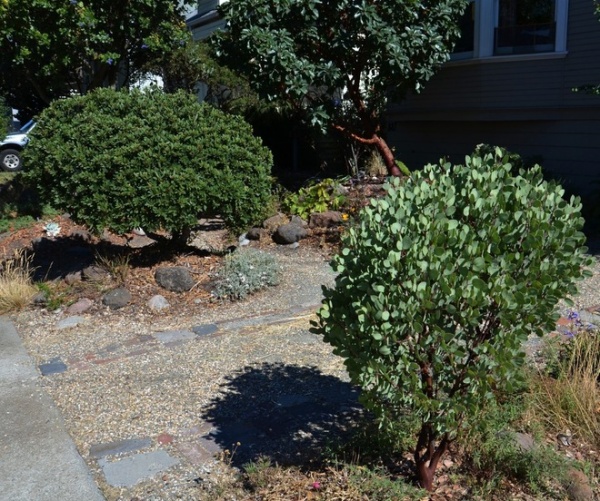
Shown (clockwise from front right): A young big berry manzanita with coffeberry (Frangula californica) and madrone (Arbutus menziesii)
More:
10 Top California Native Plants, Trees and Grasses
Browse plants native to more regions of the U.S.












